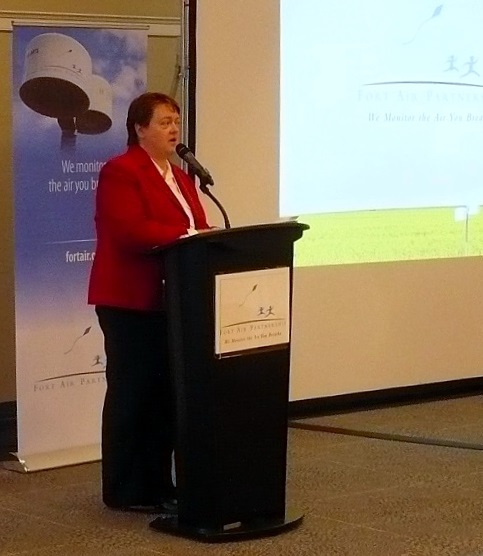Beginning this fall, Fort Air Partnership (FAP) will place special equipment at its Bruderheim air monitoring station to collect a 24-hour sample of Volatile Organic Compounds (VOC) every six days. Collected samples will be analyzed by the Environment Canada Laboratory in Ottawa for approximately 125 different VOC compounds. Funded by Alberta Environment and Sustainable Resource Development, the six month research project may be extended to a full year depending on future funding.
Findings will be compared to VOC levels measured at other selected sites in Alberta and Canada, and a previous study done in 2004-2006 at FAP’s Fort Saskatchewan air monitoring station. They will also be compared to Alberta Ambient Air Quality Objectives for those pollutants that have objectives in place. A summary of the findings will be made public.
A volatile organic compound is a carbon-based molecule that may bond to other elements such as hydrogen, oxygen, nitrogen, chlorine, fluorine and/or bromine. VOCs are chemicals that easily form vapors under normal pressures and temperatures. Once emitted into the atmosphere, they are often odorous and can have hazardous effects on plants, animals and humans. They can also react photo-chemically – in the presence of sunlight – to produce additional pollutants. VOCs are produced by a variety of natural and human sources.
Reason for the Special Project
Concerns have arisen in recent years from residents in and around the Town of Bruderheim regarding the impact of possible emissions from oil and gas wells and other industrial facilities near the town on local air quality. Responding to these concerns, as well as fulfilling recommendations made in a 2012 network assessment, FAP’s new monitoring plan includes additional VOC monitoring.
In the past, Alberta air quality monitoring had only been required for large scale development related to upstream oil and gas and chemical manufacturing. This means that only industrial facilities with emissions above a government set threshold were required to contribute to air quality monitoring. It is now recognized, by both FAP and the Alberta Government, that a better understanding of the cumulative impact of all emission sources on regional air quality is required, including smaller sources such as oil and gas wells.


